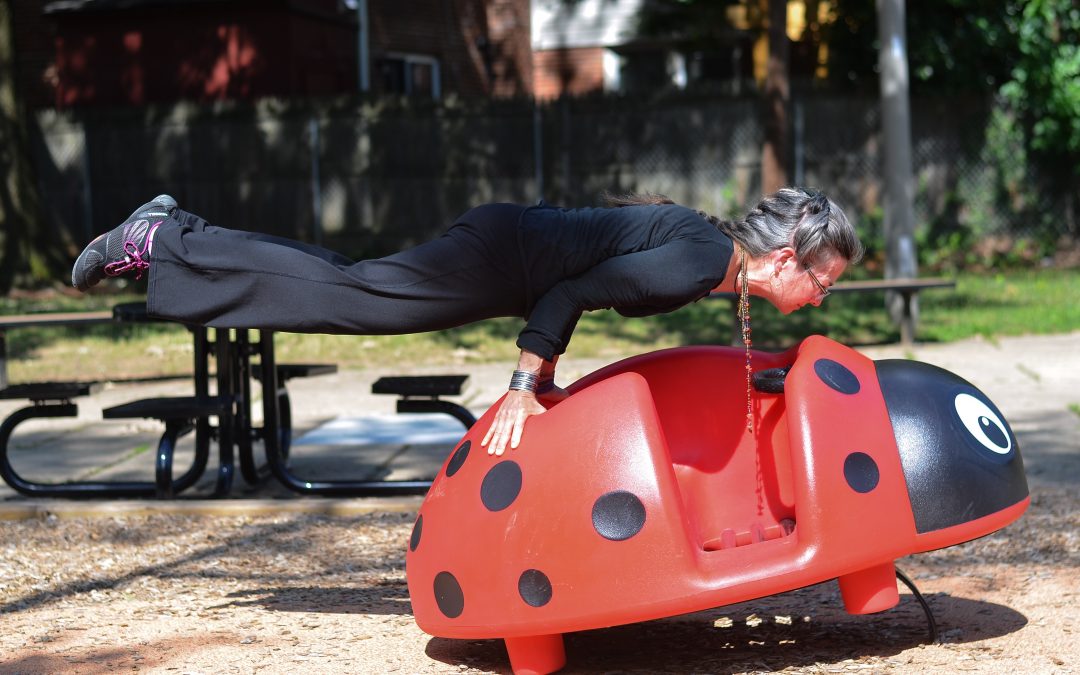If I told you there was a pill that could improve your mood, extend your lifespan by a decade, and reduce your chance of dying from any cause, you’d take it, right? Of course you would. Now, when I tell you that “pill” is exercise – which is proven to confer all these benefits and more – do you still take it? Of course most of us say yes, but the stats don’t lie – Americans are more inactive than ever. Just a mind-boggling 10% of Americans exercise regularly.
Why? There’s lots of easy targets to blame: car-based infrastructure, digital devices, poor diets, sedentary work, etc., etc. But I think the problem is simpler than all that. Are you ready? Brace yourselves.
It’s exercise’s fault. Before your head explodes, hear me out.
The concept of exercise – a specific task performed with the intention of increasing physical fitness – is not new. But for millennia it was a special discipline, the province of soldiers, athletes, and performance artists – people who needed to be exceptionally fit to perform their roles. For everyone else, simply going about their daily lives was enough to provide an adequate amount of movement to maintain their basic health. This was true of children as well. Sports, play, and exploration provided more than enough movement back in the “free range” days of pre-modern parenting and education. In the wake of industrialization, however, the link between daily living and movement has been steadily eroded with each generation, with the unintended consequences growing into a widening public health crisis. In response, many countries have attempted to mainstream the special discipline of exercise through the concept of “fitness,” a vague state of well-being that promises to make you “look good” and “feel better,” unconnected to any specific task or physical skill. This hasn’t worked, and the reason should be plainly obvious. Exercise by itself…kind of sucks. It’s hard. It takes discipline, commitment, and specialized knowledge of the body. It’s not about enjoyment, unless you’re one of those weirdos who just love spending hours in the gym. For most of us who do exercise regularly, it’s just what we have to do in order to continue doing what we like to do. I can tell you without a doubt that I, as a lifelong athlete, don’t want to exercise. I do it because my movement goals require it. However, if you don’t really need to move but would like to, why on earth would you choose the unnatural, difficult, and largely unnecessary discipline of exercise? That’s right, you wouldn’t. And yet, that’s the main alternative to sedentary living prescribed for so many. We shouldn’t be surprised when they say “No thanks.” So what can be done?
At PK Move, part of our mission is to re-frame this problem. It isn’t a lack of exercise causing our health decline. It’s lack of movement. The science is backing this up. What we’re now discovering is that short, but frequent, bouts of simple activities, like going for a short walk or even just shaking your limbs for a few minutes (a PK Silver favorite), can deliver many of the same benefits as rigorous, disciplined exercise. It won’t be as dramatic, and you might never become “shredded” (whatever that’s worth), but you will enjoy the very same mental, emotional, and physical benefits as the gym rat, without having to sign up for any memberships. The trick is it should be something you actually like doing.
This makes perfect sense. No other mammal is observed to “exercise” and yet they remain active and healthy throughout their lives (unless they live with a sedentary human). How? It’s simple. They play. They wrestle each other. They run around “for no reason” and they stretch for a few seconds here and there dozens of times a day. It all adds up to a fitness routine on par with a trained athlete. And you know what? We all played too. Try to think back to when you were two or three years old. What exercises did you do? None. But you were curious! You wanted to crawl, walk around, look at things, try to climb on them, figure out how to get down, etc. As a toddler you had enough intuition and self-knowledge (if not a full appreciation of danger) to begin building the strength and skills you’d need to navigate life without doing a single push up. If it worked then, why not now?
PK Silver, our parkour + falls prevention program for older adults, takes this play-based approach to fitness. Yes, there are still exercises that we do, but they are woven into the wider fabric of playful movement. Yes, we still dispense some of that “specialized body knowledge” so our students can learn to take care of themselves, but we do it with games and skills rather than sets and reps. It’s about movement for its own sake, creating strength through play like we’re designed to.
If you’d like to try out a free class over Zoom and discover how to have fun with movement right there in your living room, drop us a message and we’ll hook you up! Come play!
